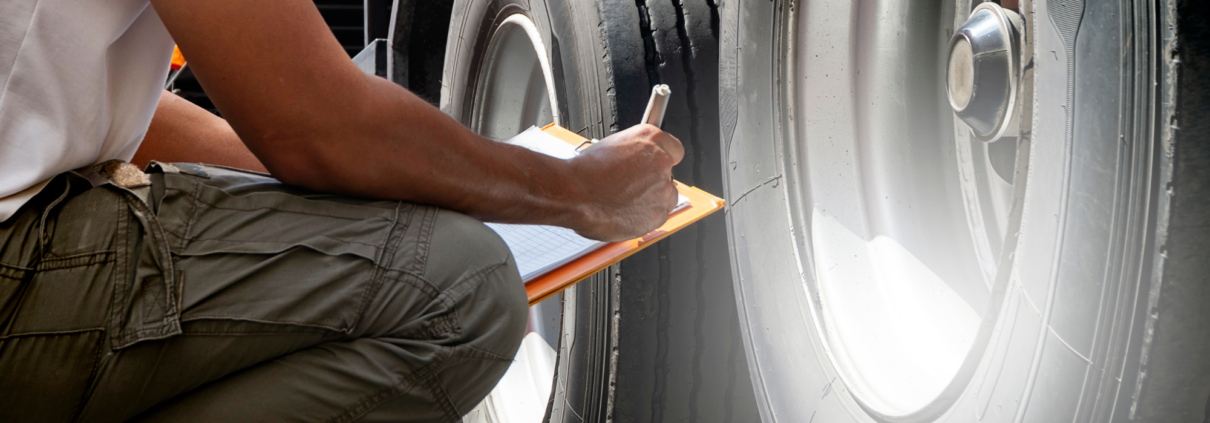Truck Tire Safety 101
Keeping a close watch on your tires is great for driver safety, fuel economy, and increasing the lifespan of your tires. Here’s your crash course in tire safety – what to keep a close eye on and how you can ensure your safety on the road!
Perform Regular Air Pressure Checks
 Know the tire air pressure specifications for your tires and load, ensuring the tire pressures are properly set for your truck and cargo weight. A common problem is under-inflation, which is any pressure less than the minimum recommended for the tire load, not just when it looks flat! Under-inflation is a major cause of dangerous blowouts, fires, and other tire issues.
Know the tire air pressure specifications for your tires and load, ensuring the tire pressures are properly set for your truck and cargo weight. A common problem is under-inflation, which is any pressure less than the minimum recommended for the tire load, not just when it looks flat! Under-inflation is a major cause of dangerous blowouts, fires, and other tire issues.
Keep an accurate gauge handy and check when tires are cold before your trip; this helps you avoid under-inflation and make sure they always have adequate pressure. If maintaining the right pressure level is a problem for your tires, inform your maintenance department as soon as possible!
Check For Even Wear On The Tires
Wear on the tire is caused by several factors, including friction, the rubber, the load it has to carry, inflation, and the influence of the vehicle’s mechanical systems (e.g. alignment with road surfaces). Reducing wear means properly aligning and inflating your truck tires; the weight of the load should not exceed what the tires were designed to carry. Prioritizing these factors creates a well-worn footprint with the weight evenly distributed over it, maximizing tread life.
Do A Tread Check
A tire with low or uneven tread depth is a sign of improper air pressure. Driving on tires with poor tread depth reduces your rig’s ability to brake quickly and efficiently, and these tires are more likely to blow out upon hitting something on the road. They can also increase the likelihood of hydroplaning on wet roads!
To ensure safety and keep your hauler on the road, make sure your steering tires have a minimum tread depth of 4/32 of an inch on every major tread groove.
Pay Attention To Tire Needs While On The Road
When mid-trip, always take immediate corrective action on your tires. Replace missing valve caps so that you keep gunk out of valve stems and protect the tire’s pressure. If you run over any pieces of debris while driving, take the time to pull over and check – don’t keep on trucking! Foreign objects stuck in the tires can be dangerous.
Truck Tire Examinations Should Be A Part Of Every Pre-Trip Inspection
 You can never take your tires for granted. During your pre-trip inspection, always listen for air leaks, look for signs of uneven wear and sidewall damage, and make sure nothing appears out of the ordinary. For your safety and that of your load, it’s a necessary step before getting into the cab!
You can never take your tires for granted. During your pre-trip inspection, always listen for air leaks, look for signs of uneven wear and sidewall damage, and make sure nothing appears out of the ordinary. For your safety and that of your load, it’s a necessary step before getting into the cab!
If you follow all our Truck Tire Safety 101 tips, you’ll stay safe on the road, avoid costly traffic citations, improve the kilometers you can travel per fill-up, and help your tires stay better for longer!







![[Patrick’s mobile]-[car accident]-[body blog] [Patrick's mobile]-[car accident]](https://www.patricksmobile.ca/wp-content/uploads/2021/11/car-accident-e1638209647436-180x180.png)



